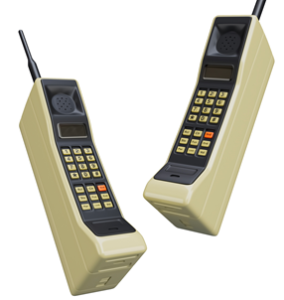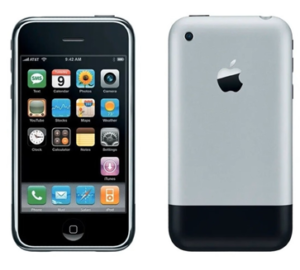Smartphones
Smartphones have become indispensable in modern society, evolving from simple communication devices into powerful tools that shape how we live, work, and interact with the world. This blog explores the journey of smartphones from their inception to the present, highlighting key features, technological advancements, and their multifaceted uses.
The Early Days of Mobile Phones: From Bricks to Basics

The journey of smartphones began with the development of the first mobile phones in the 1970s and 1980s. These devices were large, cumbersome, and primarily used for voice communication. The Motorola DynaTAC 8000X, released in 1983, is often considered the first commercially available mobile phone. It was bulky, expensive, and offered a limited battery life, but it marked the beginning of mobile communication.
Key Features:
Size and Weight: Early mobile phones were large and heavy, often referred to as “bricks.”
Battery Life: Limited, often lasting only a few hours.
Functionality: Basic voice calls and very limited text messaging.
Impact:
Communication: Revolutionized personal and business communication, enabling people to stay connected on the go.
The Transition to Feature Phones: 1990s to Early 2000s

The 1990s saw the introduction of feature phones, which offered more compact designs, longer battery life, and additional features like text messaging (SMS) and basic games. The Nokia 3310, released in 2000, became iconic for its durability and simplicity.
Key Features:
Text Messaging: SMS became a standard feature, allowing for brief written communication.
Games: Simple games like Snake became popular.
Battery Life: Improved significantly, with some models lasting several days on a single charge.
Customization: Interchangeable faceplates and ringtones allowed for personalization.
Impact:
Mass Adoption: Mobile phones became more affordable and accessible to a broader audience.
Social Interaction: SMS introduced a new way for people to communicate quickly and discreetly.
The Birth of Smartphones: 2000s

The true smartphone era began in the early 2000s, with devices that combined the functionality of a mobile phone with that of a personal digital assistant (PDA). The BlackBerry, introduced in 2003, became a must-have for business professionals, offering email, calendar, and other productivity tools. However, it was the release of the Apple iPhone in 2007 that truly revolutionized the industry.
Key Features:
Touchscreen Interface: The iPhone introduced a multi-touch interface, eliminating the need for physical keyboards.
App Ecosystem: The launch of the App Store in 2008 allowed developers to create a wide range of applications, enhancing the functionality of smartphones.
Multimedia: Integrated cameras, music players, and internet browsers transformed smartphones into multimedia devices.
Connectivity: The introduction of 3G networks enabled faster internet browsing and data transfer.
Impact:
Innovation: The iPhone set new standards for smartphone design and functionality, leading to rapid innovation across the industry.
Productivity: Smartphones became essential tools for managing work and personal tasks.
Entertainment: Access to apps, games, music, and videos made smartphones central to entertainment.
The Rise of the Modern Smartphone: 2010s to Present
The 2010s saw the rapid evolution of smartphones, with advancements in processing power, display technology, camera quality, and connectivity. Android, an open-source operating system developed by Google, emerged as a major player alongside Apple’s iOS. This decade also saw the introduction of key features like biometric authentication, mobile payments, and AI integration.
Key Features:
High-Resolution Displays: (organic light-emitting diode) OLED and (active-matrix organic light-emitting diode) AMOLED screens with high pixel densities provide vibrant colors and sharp images.
Advanced Cameras: Multi-lens systems, (Artificial intelligence) AI-powered photography, and 4K (3840×2160 resolution) video recording have turned smartphones into powerful cameras.
Biometric Security: Fingerprint scanners, facial recognition algorithms, and iris scanners enhance device security.
AI and Voice Assistants: AI-powered assistants like Siri, Google Assistant, and Alexa offer voice-activated controls and personalized recommendations.
5G Connectivity: The rollout of 5G networks promises faster internet speeds and low latency, paving the way for new applications like augmented reality (AR) and virtual reality (VR).
Impact:
Global Connectivity: Smartphones have bridged the digital divide, connecting people across the globe.
Digital Lifestyle: From social media to mobile banking, smartphones have become integral to daily life.
Technological Convergence: Smartphones now serve as all-in-one devices, replacing cameras, (global positioning system) GPS units, music players, and more.
The Future of Smartphones: What’s Next?
As we look to the future, smartphones are likely to continue evolving, incorporating new technologies like foldable displays, AI-driven user experiences, and even deeper integration with other smart devices in the Internet of Things (IoT) ecosystem.
Potential Features:
Foldable and Rollable Displays: Flexible display technology may lead to new form factors.
Enhanced AR/VR Capabilities: Smartphones could become central to immersive AR and VR experiences.
Sustainability: With growing environmental concerns, future smartphones may prioritize sustainable materials and energy-efficient designs.
Impact:
Continued Innovation: The smartphone industry is poised for ongoing innovation, driven by consumer demand and technological advancements.
Integration: Smartphones will likely become even more integrated into our daily lives, serving as hubs for smart homes, health monitoring, and more.
In general, the evolution of smartphones from simple communication devices to multifunctional tools has profoundly impacted society. As technology continues to advance, smartphones will likely play an even more significant role in shaping our future. Understanding this evolution helps us appreciate the capabilities of these devices and anticipate the exciting possibilities that lie ahead.
